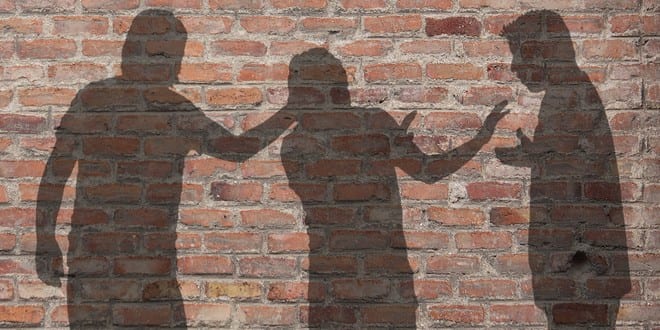Life is often not fair, and this is illustrated by a new finding about bullying from research carried out by an international team. It included Israeli researchers who studied 874,000 children in 40 countries in Europe, North America and Israel.
The study, called the Health Behaviors in School Aged Children (HBSC) study was just published in JAMA (Journal of the American Medical Association) Pediatrics. It concluded that children up to the age of four who live in areas of income inequality are more likely to be bullied as teenagers.
The children studied, lived in 40 medium- and high-income countries. The researchers were led by Canadian researchers with colleagues from Israel, Ireland, Poland and Romania.
Prof. Sophie Walsh of the criminology department of Bar-Ilan University, serves as the international leader of the Violence and Injury Focus Group within the HBSC and participated in the study. Prof. Yossi Harel Fisch, of the Churgin School of Education at Bar-Ilan University, is the Israeli principal investigator for HBSC.
The researchers used 35 years of data from the HBSC survey, which uses representative samples of 11, 13 and 15-year-olds in each country. The analysis was carried out within the framework of the Violence and Injury Focus Group.
They defined bullying as a series of “repeated, unwanted, aggressive acts intended to harm or intimidate someone who is less powerful.” Bullying could show up as physical or verbal attacks or by rumors or social exclusion. It may also cause serious damage to the mental and physical health in both those who are bullied and those who are the aggressors. Both sides are at risk of suffering emotional and behavioral problems when they grow up, including post-traumatic stress syndrome, according to experts.
According to the study, income inequality at a country during the first four years of a child’s life – and surprisingly not during school-age years – was associated with being bullied later, as a teenager. “One might think that children become aware of income inequality at school, but it seems that the impact of income inequality comes at a time before children would actually have awareness of it,” noted Walsh. She added that these harmful effects may be related to processes occurring within the family that result from greater income inequality. The researchers also found that income inequality did not predict whether kids would become bullies rather than victims of bullying.
In Israel, data from the last survey published in 2013 and 2014 found that levels of bullying victimization were in the middle, compared with other countries in the survey. About 5% of 13-year-old Israeli girls and 16% of the boys reporting having been bullied at least two or three times in the previous few months.
The findings show that income inequality impacts not only low-income children and that it can have long-term impact on development in the future, including youth violence. The study authors say that more research is needed in order to understand what social influences can lead to youth violence, how early-life income inequalities influence development and why children who grow up in a family with relatively less income may be at greater risk.
“It is possible that the relationship found between measures of economic inequality and rates of bullying victimization is a reflection of differences in exposure to key protective factors such as coherent family culture, parental and teacher support, positive school experience, healthy peer connectedness and access to organized extracurricular activities,” said Harel-Fisch. “Resiliency factors such as these have been demonstrated in many studies as predicting lower victimization rates. In societies suffering from significant socio-economic inequalities, these resiliency factors might be limited, thus effecting higher levels of bullying victimization.”
While national governments should minimize differences in income in their populations, bullying prevention and education efforts in young children could be effective more quickly in reducing the harmful effects of income inequality.
The overall study was funded by the Canadian Institutes for Health Research, Social Sciences and Humanities Research Council (Canada) and Canada Research Chairs Program. The HBSC study in Israel is funded by the Israel Ministries of Health and Education.




